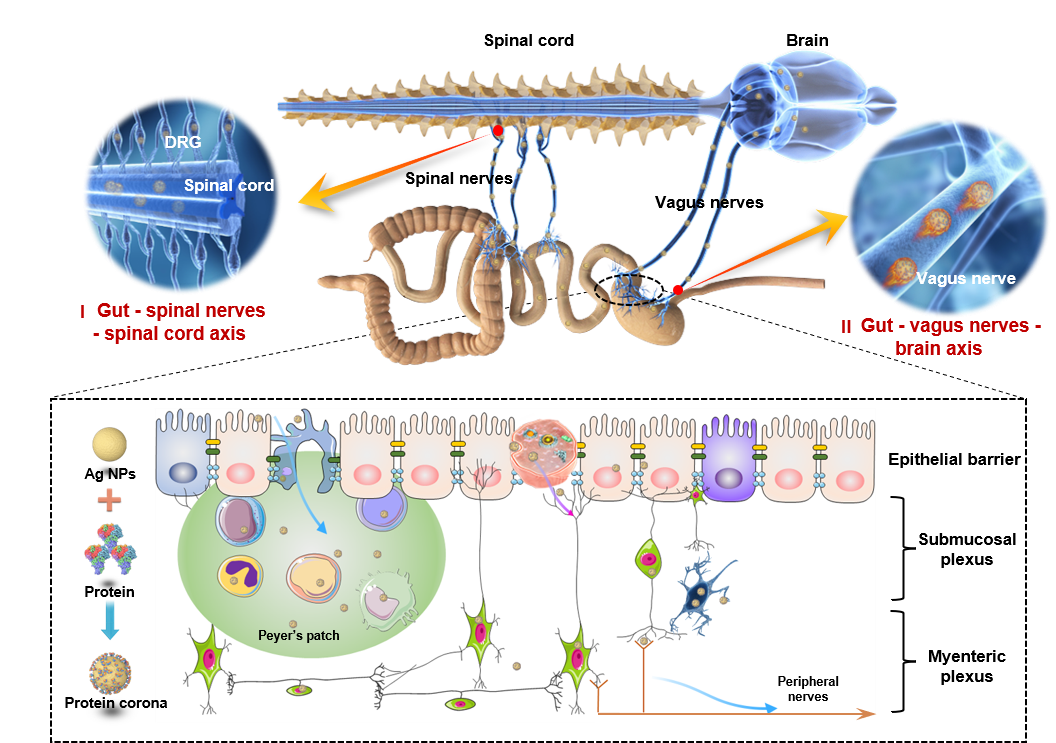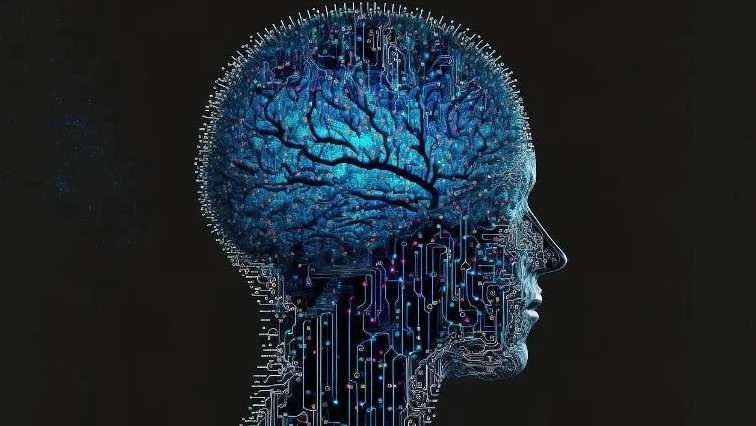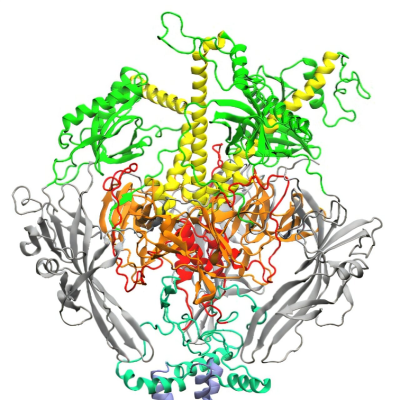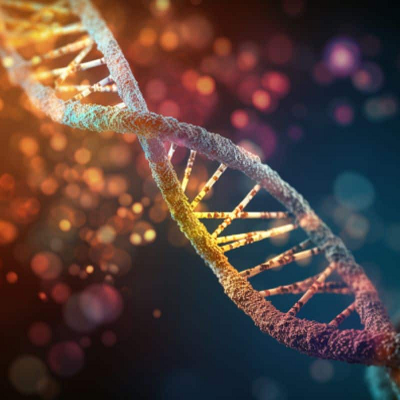The transport route determines the final target organ and subsequent biological effects of exogenous nanoparticles (NPs), the specific transfer route map of NPs is crucial to unveiling their nanotoxicological as well as nanomedical potential. However, there are still substantial knowledge gaps in understanding of the transport of NPs from the gut to the CNS, which hinders both our understanding of the gut-CNS axis communication and the development of new therapeutic strategies that target CNS-associated diseases.
In this work, research team first revealed transfer routes for Ag NMs along the gut-CNS axis in addition to blood circulation. The authors demonstrate, both theoretically and experimentally, the direct translocation of Ag NMs from the gut to the CNS (both the brain and spinal cord) via peripheral nerve fibers. Using laser ablation and field flow fractionation inductively coupled plasma mass spectrometry, they show that Ag NMs administered by oral gavage became enriched in a particle state in the brain and spinal cord of mice while not efficiently entering the blood.
In addition, the vagus and spinal nerves mediate the transneuronal transport of Ag NMs along the gut-brain axis and gut–spinal cord axis, respectively, with specific gut cell subsets (enterocytes and enteric nerve cells) taking up significant levels of Ag NMs for transfer to the connected peripheral nerves using Cy-TOF analysis. This study implicates transneuronal transport as a mechanism for the direct trafficking of NPs, filling a crucial gap in our quest of understanding the behavior of NPs in biological systems.
This research integrated a variety of innovative methods (laser ablation Inductively coupled plasma mass spectrometry, field flow fractionation, neurotomy, and single cell mass spectrometry) to break through the ‘classical pathway’ of blood circulation mediated nanoparticles transport. For the first time, it proposed that peripheral nerve fibers as the 'non-classical pathway' mediate nanoparticles transport between organs in the body. This path of nanoparticles in the living body provides important theoretical support for the development of nanomedicines targeting CNS-related diseases.

The vagus nerves and spinal nerves mediate the transneuronal transport of silver nanoparticles along the gut-brain axis and gut-spinal cord axis.
Read the original article on National Center for Nanoscience and Technology (NCNST).







